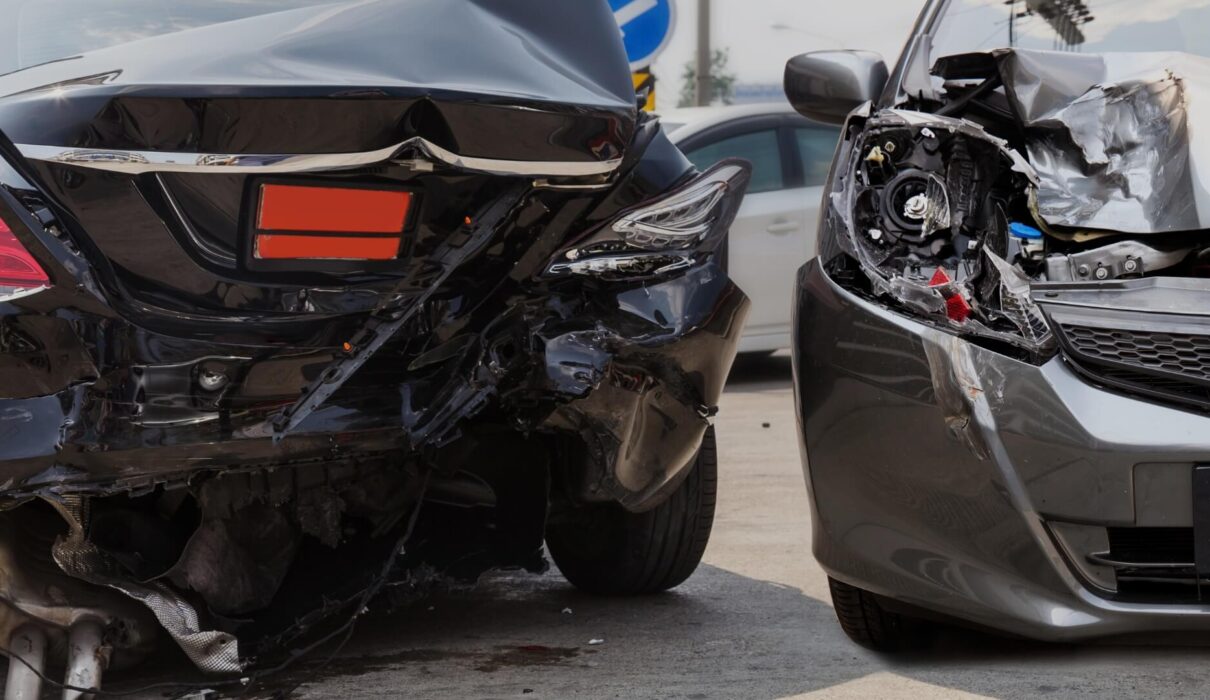If you’re a driver in Canada, you’ve likely heard about collision coverage, but do you really understand what it does and whether you need it? As a seasoned insurance advisor based in Toronto with over 15 years of experience helping Canadian motorists, I’ve seen how this coverage can be a lifesaver after a crash. In this 1500-word guide, I’ll walk you through what collision coverage is, how it works, its benefits, and key considerations to help you decide if it’s right for you. Whether you’re navigating the icy roads of Alberta or the busy streets of Quebec, this blog will give you the insights you need to protect yourself and your vehicle. Let’s get into it.
What Is Collision Coverage?
Collision coverage is a type of auto insurance that pays for repairs or replacement of your vehicle if it’s damaged in a crash, regardless of who’s at fault. In Canada, where accidents can happen due to snowstorms, wildlife, or urban traffic, this coverage steps in to cover costs like dents, scratches, or total loss—up to your policy’s limit. It’s part of a comprehensive car insurance package, but it’s optional, unlike basic liability coverage required by law in every province.
For example, if you’re driving through a winter storm in Manitoba and slide into a guardrail, collision coverage would handle the repair bill, even if no other vehicle was involved. This sets it apart from liability insurance, which only covers damage you cause to others. It’s a critical layer of protection, especially in a country where road conditions can change fast.
Who Needs Collision Coverage in Canada?
Not every driver needs collision coverage, but certain situations make it a smart choice. Here’s who should consider it:
- New or Expensive Car Owners: If you’ve got a shiny new SUV or a high-value vehicle, the repair costs can be steep. A friend in Vancouver totaled his $45,000 truck in a parking lot fender-bender—collision coverage paid out most of the value.
- Drivers in High-Risk Areas: Living in cities like Toronto or Montreal, where traffic density increases accident odds, makes this coverage valuable. I’ve seen clients avoid $15,000 repair bills after urban collisions.
- Lease or Loan Holders: If your car is financed, lenders often require collision coverage. A client in Ontario was glad to have it when a deer hit her leased sedan, costing $12,000 to fix.
- Frequent Drivers: If you log long hours on highways or rural roads—say, from Calgary to Edmonton—exposure to accidents rises. This coverage offers peace of mind.
- Older Drivers with Valuable Cars: Even if your car isn’t new, a classic or well-maintained vehicle might justify the cost. A collector in Nova Scotia protected his vintage Mustang with this policy.
Canada’s diverse driving conditions—icy winters, wildlife crossings, and heavy traffic—make collision coverage a practical consideration for many.
What Does Collision Coverage Include?
Collision coverage is straightforward but comes with specific inclusions and limits. Here’s what it typically covers:
- Accidents with Another Vehicle: Pays for damage from a head-on crash or side swipe, like a $5,000 repair after a Toronto intersection collision I handled.
- Single-Vehicle Crashes: Covers incidents like hitting a tree or guardrail, such as a $3,000 fix after a Saskatchewan driver slid on ice.
- Rollovers or Flips: Protects against damage from your car overturning, a common risk in rural areas. A client in New Brunswick claimed $20,000 after a rollover.
- Damage to Your Vehicle Only: Applies even if no other party is involved, unlike liability coverage. A Quebec driver repaired a $4,000 dent from a parking mishap with this.
- Total Loss: If your car is beyond repair, it covers the actual cash value (ACV), minus your deductible. A Manitoba driver received $18,000 for a totaled van.
Exclusions are important to note—wear and tear, mechanical failures, or damage from off-road use (e.g., mud bogging) are usually not covered. Policies also have deductibles (e.g., $500–$1,000), which you pay before insurance kicks in, and limits based on your car’s value.
How Collision Coverage Works in Canada
Getting collision coverage in Canada involves a few steps, tailored to your needs. Here’s the breakdown:
- Policy Setup: You choose your deductible and coverage limit with your insurer. A client in British Columbia opted for a $700 deductible to balance cost and coverage.
- Claim Filing: After an accident, you report it to your insurer, providing details like police reports or photos. I helped a Winnipeg driver file a $6,000 claim in under a week.
- Assessment and Payout: An adjuster evaluates the damage, and you’re reimbursed for repairs or the ACV, minus the deductible. A Toronto client got $10,000 for a totaled car after a multi-car pileup.
Premiums vary by province, car value, and driving record. In Ontario, expect $300–$1,200 annually for a mid-range vehicle, per the Insurance Bureau of Canada (IBC). Major providers like Intact, TD Insurance, and Aviva Canada offer collision coverage, often bundled with comprehensive policies.
Benefits of Collision Coverage for Canadian Drivers
Collision coverage offers clear advantages, especially in Canada’s challenging driving environment:
- Financial Protection: Repair costs can soar—$15,000 for a crumpled hood isn’t uncommon. This coverage prevents you from paying out of pocket.
- Peace of Mind: Knowing you’re covered on icy highways or busy intersections lets you drive with confidence. A client in Alberta felt secure after a $7,000 claim.
- Loan or Lease Compliance: Banks require it for financed cars, avoiding penalties. A Quebec driver met lender terms with a $500 premium.
- Faster Recovery: Quick payouts get your car back on the road. A Nova Scotia driver repaired a $9,000 dent in days.
- Value Preservation: Protects your investment, especially for newer or high-value cars. A Vancouver owner safeguarded his $40,000 hybrid.
A real example: A friend in Saskatchewan avoided a $13,000 bill when a blizzard caused a crash—collision coverage handled it, letting him replace his car swiftly.
Limitations and Considerations
While valuable, collision coverage has drawbacks to weigh:
- Cost: Premiums can add $300–$1,200 yearly, depending on your car and location. A Toronto driver paid $900 for a luxury sedan.
- Deductible Impact: A $1,000 deductible means you cover that upfront, which might strain budgets. A client adjusted to $500 for affordability.
- Exclusions: No coverage for off-road use, wear, or intentional acts. A driver learned this when a joyride damaged his truck.
- Diminishing Returns: For older cars worth less than $3,000, the cost might outweigh benefits. An expert from IBC suggests dropping it for low-value vehicles.
- Claim Frequency: Filing often can raise future premiums. A Montreal driver saw a 10% hike after two claims.
Discuss these with your insurer to align coverage with your needs.
How to Choose the Right Collision Coverage in Canada
Picking the best collision coverage takes thought. Here’s how to decide:
- Evaluate Your Car’s Value: Check the ACV—cars under $3,000 might not justify it. A client in Manitoba dropped coverage on a $2,500 clunker.
- Set a Comfortable Deductible: A $500–$1,000 deductible lowers premiums. An Ontario driver chose $700 to save $200 yearly.
- Compare Insurers: Look at Intact, TD Insurance, and Aviva. A Calgary resident saved 15% switching to TD after quotes.
- Consider Driving Habits: High mileage or rural routes increase risk. A Saskatchewan farmer added it for $400/year.
- Consult a Broker: Experts tailor plans to provincial laws. I helped a Quebec client navigate unique regulations for a $600 policy.
Take time to match coverage to your situation—rushing risks overpaying.
Real-Life Examples of Collision Coverage in Action
Real stories show its worth:
- Case 1: Winter Crash: A driver in Newfoundland hit black ice, totaling a $15,000 car. Collision coverage paid $14,000 after a $500 deductible.
- Case 2: Urban Accident: A Toronto driver rear-ended a bus, costing $8,000. The claim was settled in a week.
- Case 3: Wildlife Collision: A driver in B.C. struck a moose, damaging a $25,000 SUV. Coverage covered $23,000, minus $1,000.
These cases highlight its role in diverse scenarios.
Tips to Maximize Your Collision Coverage
To get the most from your policy, try these steps:
- Drive Safely: Avoid accidents to keep premiums low. A client in Alberta took a defensive driving course, saving 5%.
- Maintain Your Car: Regular upkeep prevents excluded damage. A Quebec owner fixed brakes, avoiding a denied claim.
- Document Accidents: Take photos and get police reports. A Winnipeg driver sped up a $6,000 claim with evidence.
- Review Annually: Adjust coverage as your car’s value drops. A Nova Scotia driver lowered limits on a 10-year-old car.
- File Claims Wisely: Limit claims to major incidents. A Montreal driver skipped a $300 dent to avoid rate hikes.
These tips ensure cost-effective protection.
Final Thoughts
Collision coverage is a key consideration for Canadian drivers, offering protection against crash-related costs on our diverse roads. Whether you’re in snowy Yukon or bustling Ontario, it shields your finances and keeps you moving. Assess your car’s value, driving habits, and budget, then compare options from Intact or TD Insurance with a broker’s help.
Ready to secure your ride? Contact a Canadian insurer today to explore collision coverage or review your policy. Drive with confidence knowing you’re covered.


